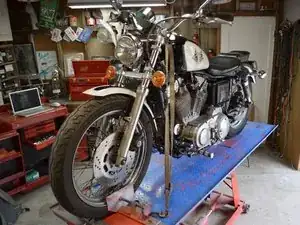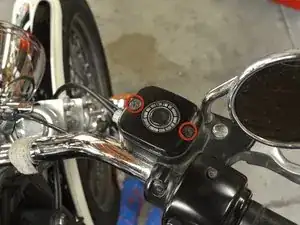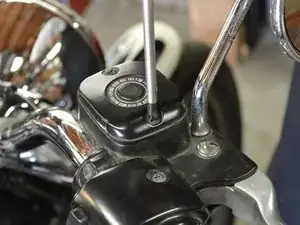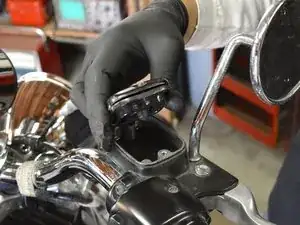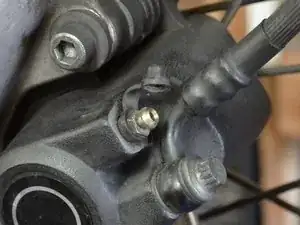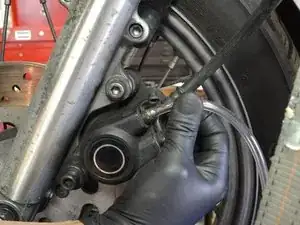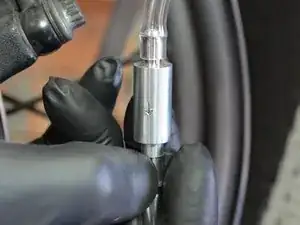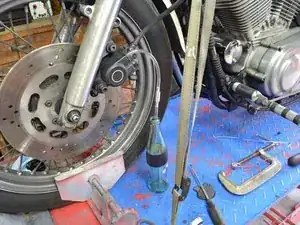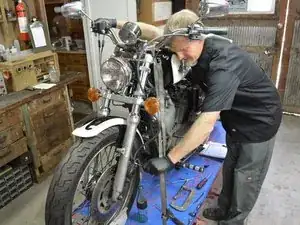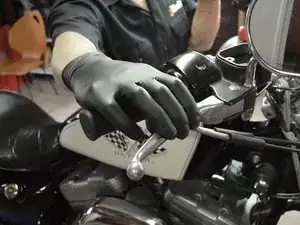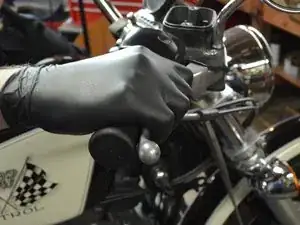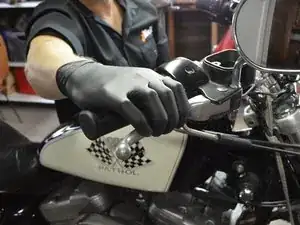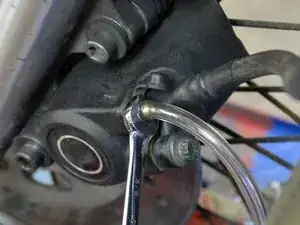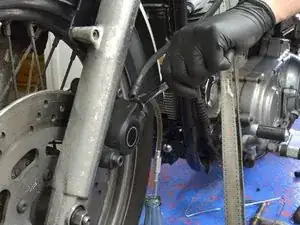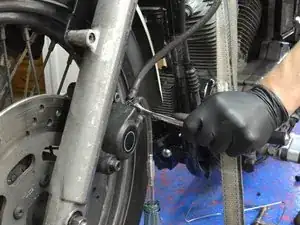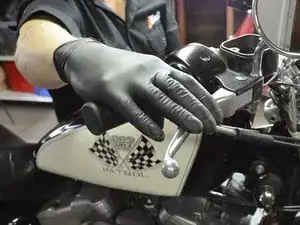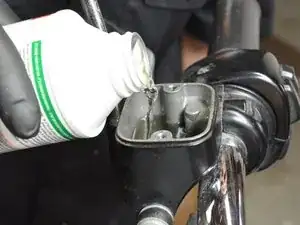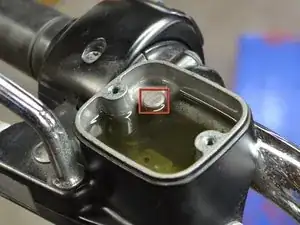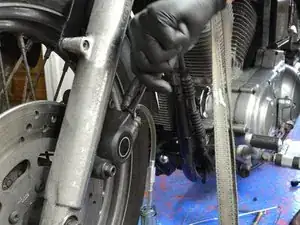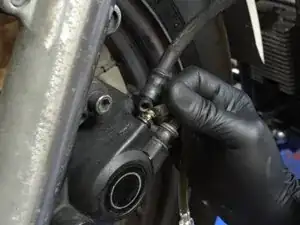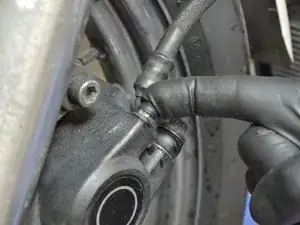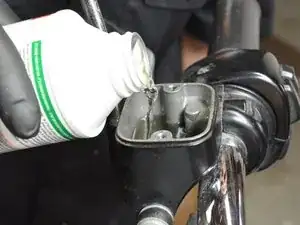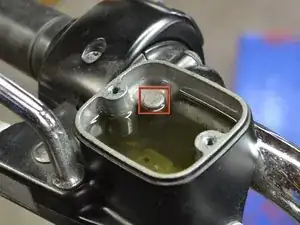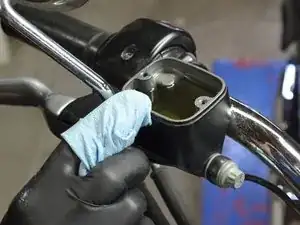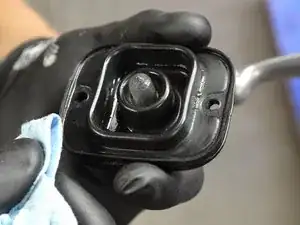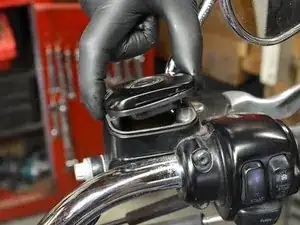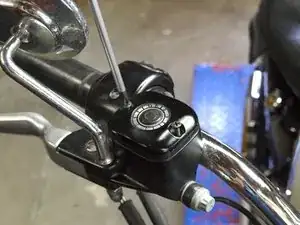Einleitung
This guide will show you how to bleed and refill the front brake lines on the Harley-Davidson Sportster Evolution.
Werkzeuge
Ersatzteile
-
-
Using a Phillips #2 screwdriver, remove the two screws securing the lid on the master brake fluid cylinder.
-
Remove the lid from the master cylinder, and set it aside.
-
-
-
Locate the brake fluid bleed valve on the top of the front brake assembly, and flip up the rubber cap covering it.
-
Slide a 3/8" brake bleeder hose over the bleed valve.
-
-
-
Using a 3/8" wrench with your left hand, open the bleed valve on the front brake cylinder.
-
The built-up pressure in the lines will force some of the brake fluid out of the lines.
-
Continue to force more brake fluid out of the brake lines by depressing the front brake lever with your right hand.
-
Once the brake lever is completely depressed, quickly close the bleed valve, making sure that no air bubbles enter into the brake lines.
-
-
-
Repeat the process outlined in step five and six until the amount of brake fluid in the master cylinder is getting low.
-
Refill the master cylinder with fresh brake fluid until the level of fluid is even with the metal protrusion in the rear right corner of the master cylinder.
-
-
-
Continue flushing the brake lines as described above until you see the new brake fluid coming through the bleed tube.
-
When you are seeing new brake fluid coming through the bleed hose, stop the flushing process and firmly close the bleed valve.
-
Gently pull the bleed tube off of the bleed valve and re-cover the valve with the little rubber cap.
-
-
-
Fill the master brake cylinder one last time with fresh brake fluid until the fluid is level with the metal tab in the rear right corner of the cylinder.
-
-
-
Using a damp rag, wipe down the rim and rubber gasket of the master cylinder and the master cylinder cover.
-
-
-
Using a Phillips #2 screwdriver, replace the master cylinder cover and screw it firmly into place.
-
2 Kommentare
Make sure you use the correct type brake fluid. A common issue especially with DOT5 is after bleeding the lever may not compress to activate the brakes. This is air in the fluid. DOT4 holds air as visible bubbles, while DOT5 holds air in microscopic bubbles. DOT4 holds water in suspension, while water in DOT5 will settle to the lowest part of the system usually in the calipers, which is why it is important to keep DOT5 systems bled. The cure for suspended air in DOT5 when renewing fluid is to squeeze the lever or pedal with the bleed valve closed, slipping your fingers off the lever releasing it rapidly with the master reservoir cap off. Notice if tiny bubbles come up into the reservoir. Also use a syringe with fluid attached to open bleed valve and force fresh fluid up into the system. With this technique you should be able to get some resistant pressure at the lever.
dkshaman -
Then compress lever against this pressure, tie off and leave overnight. The pressure induced into the system will force held air out of the fluid. Repeat until lever or pedal feels firm at outer reach of adjustment.
dkshaman -
